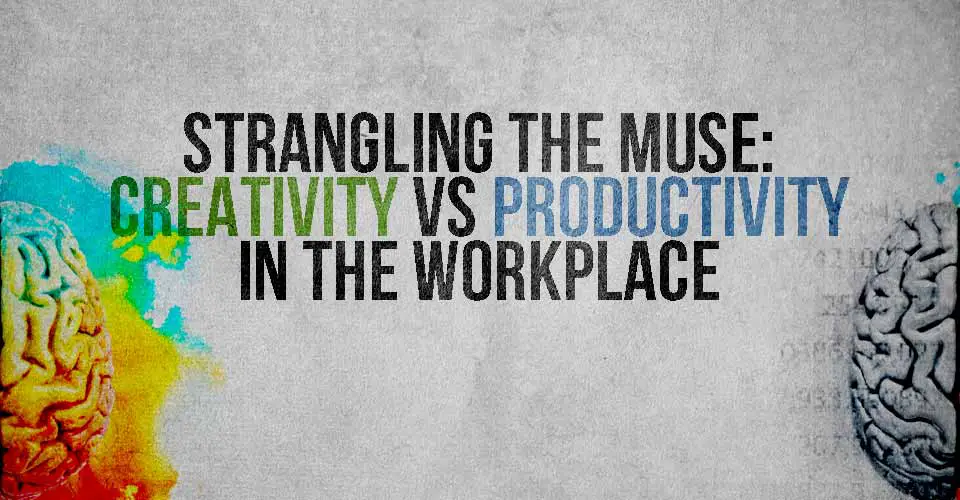
Almost every working business model places great importance on productivity: productivity, after all, leads to profitability. From landscaping businesses to advertising firms, Silicon Valley startups to vintage financial corporations, productivity is the name of the game. Increased output = increased profits, a formula as reliable and as old as time. Except it’s not.
Buy an “Intelligence is sexy” t-shirt!
More and more employers are emphasizing the importance of creativity in the workplace. Creativity leads to innovation; innovation leads to huge transformations in the evolution of a company. While productivity is the regular hum that keeps the profits coming in and encourages routine growth, creativity is its opposite: most of the time it looks like nothing is going on, and then every once in awhile a spectacular lightning storm of innovation revolutionizes the company overnight, transforms a product line, or makes a Google out of a Backrub. (Does anyone remember any of the other pre-Google search engines? I didn’t think so.)
It stands to reason, then, that in order to emphasize creativity, productivity must be de-emphasized. Innovation happens when the mind is given a lot of unrestricted time to noodle on an idea, thought, or process, not when it’s tied to deadlines or limited to office hours. Truly, creativity can’t be limited in any way. Creative bursts come through in the middle of the night, during a daily shower, over a lunch break, while driving to the grocery store, and sometimes while sitting at one’s desk at work. The point is that creativity can’t be tabled, measured or quantified the way that productivity can be.
This makes creativity a costly gamble for many businesses, but those willing to take a chance have seen the brainstorms, breakthroughs and bright ideas turn very quickly into profits. Google’s “20% Time” policy, for example, has been widely touted as a radical departure from the usual corporate-think regarding productivity, and its results have been profligate: Google attributes Gmail, Google News and even AdSense to its “20% Time” policy.
Interestingly, Google’s “20% Time” is widely acknowledged within the company as more of a concept than a policy. Google’s HR boss Laszlo Bock states, “In some ways, the idea of 20 percent time is more important than the reality of it. It operates somewhat outside the lines of formal management oversight, and always will, because the most talented and creative people can’t be forced to work.” The idea is that if an employee gets an idea and spends up to 20% of their time on it, those worthy of more attention will attract more people to its development until it is formalized into a development cycle within the company.
Read: Scientists Link Creativity To Insanity
Not exactly the lying-around star-gazing time you were imagining, right? Well, companies still need to do the routine producing that keeps them running regularly, reporting profits and paying employees. As creativity has been shown to have statistically impactful results, however, more and more companies are finding ways to loosen the productivity strictures and allow creativity to flourish. Brainstorming sessions, open-plan offices, and creating rewards for innovative ideas are just a few of the ways businesses are giving creativity freer reign in the workplace.

